Date : November 24 - 25, 2016
Notice: Takaoka Press Tour: City of Japanese Heritage
post date : 2016.11.09
"Cast Metal Artisans Revolutionizing Traditional Industries"
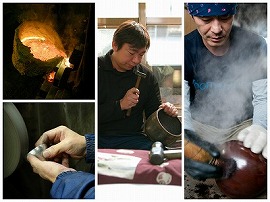 Copperware manufacturing in Takaoka city, Toyama has a history of over 400 years, and still holds the top share of the Japanese market share. The main products include Buddhist objects, copper statues, tea ware, and art objects, with many workshops located in the city. At its peak in 1990, the Takaoka copperware and ironware industry reached sales of 37.45 billion yen, but in 2012 that number had plummeted to a third of that value, 12 billion yen. In addition to the economic slump after the bubble burst, changes in lifestyle and a decline in Buddhism also had an impact, with demand for traditional Buddhist objects and flower vases dropping suddenly. This combined with the aging of artisans and a lack of young successors, with
Copperware manufacturing in Takaoka city, Toyama has a history of over 400 years, and still holds the top share of the Japanese market share. The main products include Buddhist objects, copper statues, tea ware, and art objects, with many workshops located in the city. At its peak in 1990, the Takaoka copperware and ironware industry reached sales of 37.45 billion yen, but in 2012 that number had plummeted to a third of that value, 12 billion yen. In addition to the economic slump after the bubble burst, changes in lifestyle and a decline in Buddhism also had an impact, with demand for traditional Buddhist objects and flower vases dropping suddenly. This combined with the aging of artisans and a lack of young successors, with  many businesses shutting down or shrinking. Metal casting artisans who were concerned about this situation switched from only subcontracting to cast objects, to instead develop their own products with a unique design sense taking advantage of traditional techniques, and succeeded in releasing products matching modern needs. Including their expansion into overseas markets, the metal casting manufacturers of Takaoka are a rare example of success for a traditional Japanese industry succeeding in revolutionizing itself, which has also attracted many youths who want to become artisans. At the same time, the Mikurumayama Festival, which includes extravagant floats called “moving art galleries” made using all the finest traditional crafting techniques of Takaoka, is likely to be included on the UNESCO List of Intangible Cultural Heritage this year.
many businesses shutting down or shrinking. Metal casting artisans who were concerned about this situation switched from only subcontracting to cast objects, to instead develop their own products with a unique design sense taking advantage of traditional techniques, and succeeded in releasing products matching modern needs. Including their expansion into overseas markets, the metal casting manufacturers of Takaoka are a rare example of success for a traditional Japanese industry succeeding in revolutionizing itself, which has also attracted many youths who want to become artisans. At the same time, the Mikurumayama Festival, which includes extravagant floats called “moving art galleries” made using all the finest traditional crafting techniques of Takaoka, is likely to be included on the UNESCO List of Intangible Cultural Heritage this year.
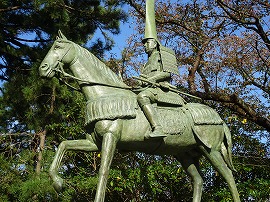 Metal casting, the foundation of Takaoka’s development through trade and industry, started with Toshinaga Maeda. The second head of the Maeda family who ruled the Kaga Domain, he constructed Takaoka Castle and its accompanying town in 1609, and summoned seven metal casting experts to Kanaya-machi. However, Toshinaga passed away only five years later, and the year after that the castle was decommissioned due to a new law calling for only one castle per province, threatening the very existence of the town. The next Maeda lord, Toshitsune, forbid Takaoka citizens from moving to other towns, preventing the loss of artisans, and implemented a variety of policies focused on its citizens to develop Takaoka into a center for commerce. Takaoka continued to prosper as a town of merchants and artisans. The casting industry in particular made manufacturing ironware such as daily goods and agricultural implements, but in the 1750s expanded into creating cultural products with copper such as Buddhist objects and flower vases with delicate ornamentation. Takaoka’s cast metal products spread throughout Japan along the Kitamaebune shipping route, which went from Osaka to Hokkaido along the Sea of Japan side, and led to even greater prosperity and advancement of the local folk culture. In 2015, the Agency for Cultural Affairs designated the story “Flourishing Folk Culture Under the Rule of the Maeda Family of Kaga” that describes the history of Takaoka as Japan Heritage.
Metal casting, the foundation of Takaoka’s development through trade and industry, started with Toshinaga Maeda. The second head of the Maeda family who ruled the Kaga Domain, he constructed Takaoka Castle and its accompanying town in 1609, and summoned seven metal casting experts to Kanaya-machi. However, Toshinaga passed away only five years later, and the year after that the castle was decommissioned due to a new law calling for only one castle per province, threatening the very existence of the town. The next Maeda lord, Toshitsune, forbid Takaoka citizens from moving to other towns, preventing the loss of artisans, and implemented a variety of policies focused on its citizens to develop Takaoka into a center for commerce. Takaoka continued to prosper as a town of merchants and artisans. The casting industry in particular made manufacturing ironware such as daily goods and agricultural implements, but in the 1750s expanded into creating cultural products with copper such as Buddhist objects and flower vases with delicate ornamentation. Takaoka’s cast metal products spread throughout Japan along the Kitamaebune shipping route, which went from Osaka to Hokkaido along the Sea of Japan side, and led to even greater prosperity and advancement of the local folk culture. In 2015, the Agency for Cultural Affairs designated the story “Flourishing Folk Culture Under the Rule of the Maeda Family of Kaga” that describes the history of Takaoka as Japan Heritage.
---------------------------------------------------------------------------------
This tour will visit Cultural Properties that tell the history of over 400 years of Takaoka folk culture, as laid out in the Japan Heritage story, while visiting metal casting artisans who have been gaining attention from both Japan and overseas due to developing new products using traditional techniques.
<Metal Casting Companies> Nousaku, Futagami, Shimatani Shouryu Kobo, Momentum Factory Orii
<Cultural Properties> Takaoka Castle Site, Zuiryuji Temple, Kanaya-machi, Great Buddha of Takaoka, Fushiki Kitamaebune Museum, Takaoka Mikurumayama Museum
----------------------------------------------------------------------------------
*This press tour is sponsored by the Takako City Japan Heritage Promotion Council, with planning cooperation by the FPCJ.
*This press tour will require participants to bear part of the cost, but is not a profit-making venture.
【Tour Details】
―Cast Metal Artisans Revolutionizing Traditional Industry
1. Pioneer of Traditional Industry Revolution Moving On to the Next Step
Nousaku Corporation
Chiharu Nousaku (30)
Marta Rinaudo (24)
Established in 1916, Nousaku casts Buddhist altar fittings, tea sets, and flower vases out of metals such as bronze and brass. Due to selling the products they cast unprocessed to wholesalers, and leaving finishing and sales up to other companies, there were no opportunities to hear customer opinions. Wanting to see the reaction of people using their products, the fourth-generation owner Mr. Katsuji Nousaku listened to opinions from salespeople and designers and started sales of products made by the company when he became president in 2003, including interior goods, tableware, lighting fixtures, and accessories.  The company developed many hit products, including 100% tin dishes taking advantage of tin’s characteristics making it bendable by hand. Having grown large enough to have ten outlet stores in Japan, the company has also been expanding overseas into 15 countries in Asia, Europe, and the Americas. As sales increased, so did the size of the staff, which has grown from around a dozen 15 years ago to around 120. Taking advantage of tin’s flexibility and anti-bacterial properties, they have also expanded into the medical industry. Nousaku is a pioneer that created a revolutionary new path for developing products in house, when the casting industry in Takaoka previously only took on certain kinds of work.
The company developed many hit products, including 100% tin dishes taking advantage of tin’s characteristics making it bendable by hand. Having grown large enough to have ten outlet stores in Japan, the company has also been expanding overseas into 15 countries in Asia, Europe, and the Americas. As sales increased, so did the size of the staff, which has grown from around a dozen 15 years ago to around 120. Taking advantage of tin’s flexibility and anti-bacterial properties, they have also expanded into the medical industry. Nousaku is a pioneer that created a revolutionary new path for developing products in house, when the casting industry in Takaoka previously only took on certain kinds of work.
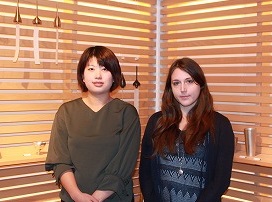 Mr. Katsuji’s eldest daughter Chiharu was not interested in the family business, which seemed to just be older artisans melting metal, and worked at in the clothing industry in Kobe. But after Nousaku’s tin products started coming up in conversation at work, she quit her job at the company she had worked at for three years and returned home in 2009. Currently, she is working on setting up industrial tourism for the new company building planned to finish construction in April 2017. Nousaku provides free tours to tourists and students, with approximately 8,000 visitors annually. They are aiming for over 20,000 visitors annually at the new location, with the hope of increasing awareness of metal casting and its techniques, and acting as a hub for tourism in Takaoka and Toyama prefecture. In April this year, the company hired Ms. Marta Rinaudo, from Italy, to help deal with foreign tourists and buyers.
Mr. Katsuji’s eldest daughter Chiharu was not interested in the family business, which seemed to just be older artisans melting metal, and worked at in the clothing industry in Kobe. But after Nousaku’s tin products started coming up in conversation at work, she quit her job at the company she had worked at for three years and returned home in 2009. Currently, she is working on setting up industrial tourism for the new company building planned to finish construction in April 2017. Nousaku provides free tours to tourists and students, with approximately 8,000 visitors annually. They are aiming for over 20,000 visitors annually at the new location, with the hope of increasing awareness of metal casting and its techniques, and acting as a hub for tourism in Takaoka and Toyama prefecture. In April this year, the company hired Ms. Marta Rinaudo, from Italy, to help deal with foreign tourists and buyers.
Ms. Chiharu Nousaku will give an overview of the company, and there will also be an opportunity to hear from Ms. Marta Rinaudo. The tour will then see where products are processed, and be able to film and photograph liquid metal being poured into casts, and processing.
*Interviews with young or veteran artisans are also possible if requested.
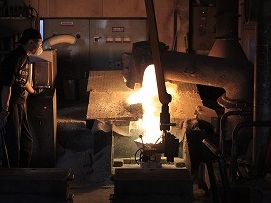
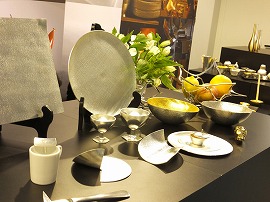
2. Entrancing Daily Goods Cast Using Brass
Futagami
Owner, Toshihiro Futagami (57)
 Founded in 1897, for over 100 years Futagami has made Buddhist objects cast from brass. Originally specializing in manufacturing rinto, a kind of decorative lantern used by the Jodo Shinshu sect, with the recent trend towards living with nuclear families and decline in Buddhism, orders have decreased. Sales of rinto declined to near 60% of their peak. Mr. Toshihiro Futagami, the fourth-generation owner, was concerned about the future of just selling Buddhist objects to wholesalers, when he met Mr. Masanori Oji, a designer, and said he wanted to start something new using the traditional skills that had been developed over the years. One year later, in 2009, they started the new brand Futagami, selling daily goods such as tableware and lighting fixtures, combining Futagami’s excellent manufacturing techniques with Mr. Oji’s designs. In 2015, they started another brand Matureware, selling architectural hardware such as nameplates and lever handles, in an expansion into new areas.
Founded in 1897, for over 100 years Futagami has made Buddhist objects cast from brass. Originally specializing in manufacturing rinto, a kind of decorative lantern used by the Jodo Shinshu sect, with the recent trend towards living with nuclear families and decline in Buddhism, orders have decreased. Sales of rinto declined to near 60% of their peak. Mr. Toshihiro Futagami, the fourth-generation owner, was concerned about the future of just selling Buddhist objects to wholesalers, when he met Mr. Masanori Oji, a designer, and said he wanted to start something new using the traditional skills that had been developed over the years. One year later, in 2009, they started the new brand Futagami, selling daily goods such as tableware and lighting fixtures, combining Futagami’s excellent manufacturing techniques with Mr. Oji’s designs. In 2015, they started another brand Matureware, selling architectural hardware such as nameplates and lever handles, in an expansion into new areas.
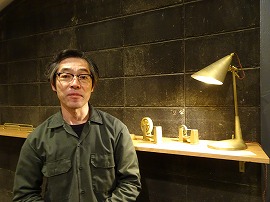 A unique characteristic of the products of these new brands are that the surface is not polished or painted after being removed from the mold, taking advantage of the natural texture of the brass and allowing users to enjoy the change in color as the product is used. Since the casting surface is being used as is, defects cannot be covered up, and the products are being made with close attention to detail. Mr. Futagami says, “Instead of mass production and mass consumption, we are making the things people need for people who need them.” With graduates of university fine arts programs applying with the hope of becoming artisans in the future, the average age of the staff of 15 is 38 years old. The new brands for daily goods and architectural hardware now make up 85% of sales, with rinto accounting for only 15% of sales. Approximately 30% of sales of the new brands are to overseas customers, with the products sold in 22 countries.
A unique characteristic of the products of these new brands are that the surface is not polished or painted after being removed from the mold, taking advantage of the natural texture of the brass and allowing users to enjoy the change in color as the product is used. Since the casting surface is being used as is, defects cannot be covered up, and the products are being made with close attention to detail. Mr. Futagami says, “Instead of mass production and mass consumption, we are making the things people need for people who need them.” With graduates of university fine arts programs applying with the hope of becoming artisans in the future, the average age of the staff of 15 is 38 years old. The new brands for daily goods and architectural hardware now make up 85% of sales, with rinto accounting for only 15% of sales. Approximately 30% of sales of the new brands are to overseas customers, with the products sold in 22 countries.
Mr. Futagami will speak about the story behind establishing the new brands, and explain the techniques for brass manufacturing, followed by an opportunity to film and photograph the factory.
*Interviews with young artisans are also possible if requested.
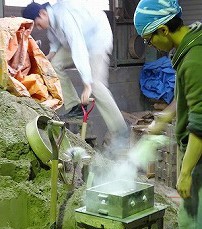
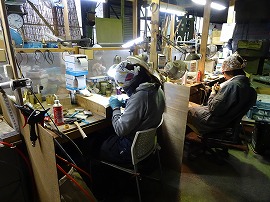
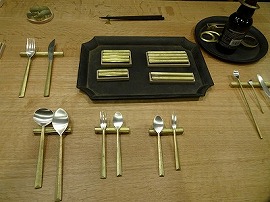
3. Preserving the Sounds and Unique Tin Dishes Made with Traditional Techniques
Shimatani Shouryu Kobo Inc.
Owner/Traditional Artisan, Yoshinori Shimatani(43)
Founded in 1909, Shimatani Shouryu Kobo specializes in manufacturing rin (singing bowls), a type of bell placed on Buddhist altars rung while reading sutras. All the techniques involved in the process, from hammering brass sheets to form the bell, to tuning at the end, have been passed down through the generations. Mr. Yoshinori Shimatani, the fourth-generation owner, left Takaoka and studied international politics at university, but at the age of 23 decided “these techniques should be passed on to the next generation,” and returned home to take over the family business. He learned from his grandfather, but it took seven years to master shaping rin, and 12 for tuning, requiring years to learn the craft. In particular, tuning involves hitting the rim of the rin with a hammer, relying on the artisan’s intuition to ensure it produces a harmonious sound.
 The techniques for crafting rin have been passed down from Mr. Shimatani’s great-grandfather, but sales of rin have dropped to 1/3 of their peak. Thinking that just passing on the skills was not enough, for the past 13 years Mr. Shimatani and the members of the Takaoka Traditional Industry Youth Group have been participating in gift trade shows. After trial and error, in 2013 he presented Suzugami at a gift show. Suzugami is a tin plate made using the techniques for hammering rin. These unique plates, which can be freely folded like origami, received a lot of attention and media coverage. As sales of Suzugami increased, the total number of workers grew from only five, including family members, to 14, including staff in their 20s. There are also orders from overseas, and so far they have exported Suzugami to countries including Austria, France, Germany, the Netherlands, Singapore, Switzerland, Taiwan, and the US. The company has also established a new brand called Syouryu, and with Suzugami having become their flagship product being used in modern lifestyles, Mr. Shimatani spoke on his plans for rin, the company’s legacy product, and how he would like to increase its popularity overseas “as an instrument, not restricted to just Buddhism.”
The techniques for crafting rin have been passed down from Mr. Shimatani’s great-grandfather, but sales of rin have dropped to 1/3 of their peak. Thinking that just passing on the skills was not enough, for the past 13 years Mr. Shimatani and the members of the Takaoka Traditional Industry Youth Group have been participating in gift trade shows. After trial and error, in 2013 he presented Suzugami at a gift show. Suzugami is a tin plate made using the techniques for hammering rin. These unique plates, which can be freely folded like origami, received a lot of attention and media coverage. As sales of Suzugami increased, the total number of workers grew from only five, including family members, to 14, including staff in their 20s. There are also orders from overseas, and so far they have exported Suzugami to countries including Austria, France, Germany, the Netherlands, Singapore, Switzerland, Taiwan, and the US. The company has also established a new brand called Syouryu, and with Suzugami having become their flagship product being used in modern lifestyles, Mr. Shimatani spoke on his plans for rin, the company’s legacy product, and how he would like to increase its popularity overseas “as an instrument, not restricted to just Buddhism.”
Mr. Shimatani will describe how he become a rin artisan, and explain the process of making rin while the journalists have an opportunity to film and photograph steps such as annealing (heating, then cooling metal). There will also be an explanation of the popular product Suzugami.
*Interviews with young artisans are also possible if requested.
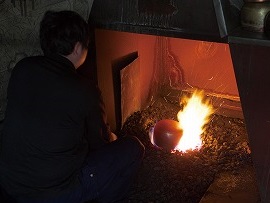
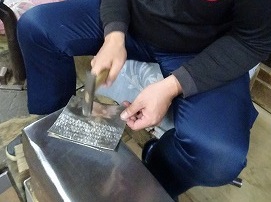
4. Using Traditional Techniques to Create New Colors for Metal
Momentum Factory Orii Co., Ltd.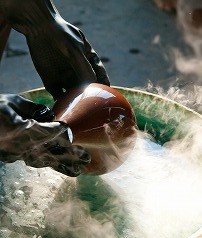
Owner/Traditional Artisan, Koji Orii (46)
Takaoka Design & Craft Center Manager, Toru Hino
Momentum Factory Orii was originally established as Orii Chakushokujo in 1950, specializing in coloring copperware at the end of the process. Traditional coloring techniques did not use pigments, instead using various chemicals along with daikon radish, pickled plums, sake, rice vinegar, and rice bran to cause chemical reactions and bring out the natural colors of metals such as copper and brass through corrosion or patina. Orii Chakushokujo used these traditional techniques not only for traditional crafts and Buddhist altar objects made in Takaoka, but also for fittings at the Tokyo Imperial Palace and for coloring art pieces.
 Mr. Koji Orii, the third CEO of the company, had been working at a successful IT company in Tokyo when his uncle told him, “If you don’t take over the company, then the skills of Orii Chakushokujo will be lost.” After thinking it over for a year, he returned to Takaoka at the age of 26. However, due to the decline of traditional industries and the economic slump, two years after he joined sales of the company had dropped by 45% compared to its peak. Concerned for the future of the company, he went to the Takaoka Design & Craft Center training school for three years to study casting and processing techniques, which are carried out before coloring. Through his studies and encounters with other artisans at the school, Mr. Orii had a newfound desire to develop products himself, and in addition to developing new colors based on traditional coloring techniques, over the course of three years he solved the difficult issue of creating a coloring technique for thin copper sheets, and began product development and sales of interior and building materials. In 2008, he changed the company name to Momentum Factory Orii, and with the company’s products drawing out the natural colors of materials such copper and brass gaining popularity, sales last year were over five times what they were during the slump. Now, 25% of sales come from subcontracted coloring, and 75% come from sales of the company’s interior and building material products, as well as the staff increasing from five in 2008 to ten now, with the average age decreasing from 55 to 35. The company has participated in exhibitions in China, Germany, Taiwan, and the US. They have begun sales to Asia, and plan on expanding into Europe as well.
Mr. Koji Orii, the third CEO of the company, had been working at a successful IT company in Tokyo when his uncle told him, “If you don’t take over the company, then the skills of Orii Chakushokujo will be lost.” After thinking it over for a year, he returned to Takaoka at the age of 26. However, due to the decline of traditional industries and the economic slump, two years after he joined sales of the company had dropped by 45% compared to its peak. Concerned for the future of the company, he went to the Takaoka Design & Craft Center training school for three years to study casting and processing techniques, which are carried out before coloring. Through his studies and encounters with other artisans at the school, Mr. Orii had a newfound desire to develop products himself, and in addition to developing new colors based on traditional coloring techniques, over the course of three years he solved the difficult issue of creating a coloring technique for thin copper sheets, and began product development and sales of interior and building materials. In 2008, he changed the company name to Momentum Factory Orii, and with the company’s products drawing out the natural colors of materials such copper and brass gaining popularity, sales last year were over five times what they were during the slump. Now, 25% of sales come from subcontracted coloring, and 75% come from sales of the company’s interior and building material products, as well as the staff increasing from five in 2008 to ten now, with the average age decreasing from 55 to 35. The company has participated in exhibitions in China, Germany, Taiwan, and the US. They have begun sales to Asia, and plan on expanding into Europe as well.
Mr. Orii will speak about the techniques and history of the company, and there will be an opportunity to film and photograph coloring techniques being carried out. Mr. Toru Hino from the Takaoka Design & Craft Center will also explain about the training school, made around 50 years ago so artisans involved in traditional crafts could learn about design and techniques to create original works.
*Interviews with young artisans are also possible if requested.

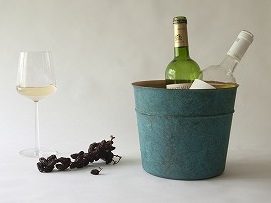
―Cultural Properties Keeping Alive the History of Folk Culture
5. Takaoka Castle Site (Takaoka Kojo Park)
 Takaoka Castle was constructed in 1609 by Toshinaga Maeda, the second head of the Maeda family that ruled the Kaga Domain, and the foundations for modern Takaoka were built around the castle. However, Toshinaga died five years later, and the Tokugawa shogunate introduced a law limiting castles to one per province, so the castle was decommissioned. Toshitsune Maeda, who succeeded Toshinaga, built storehouses for rice and salt on the site of the castle, to retain its functionality as a military base, and succeeded in keeping the walls and moat in perfect condition. Even today, the moat that surrounded the castle remains in almost perfect condition, and is a valuable resource for learning about the construction techniques of the time, as well as military and political conditions. Takaoka Kojo Park is open to the public, and is home to a municipal museum, a zoo, and a sports center.
Takaoka Castle was constructed in 1609 by Toshinaga Maeda, the second head of the Maeda family that ruled the Kaga Domain, and the foundations for modern Takaoka were built around the castle. However, Toshinaga died five years later, and the Tokugawa shogunate introduced a law limiting castles to one per province, so the castle was decommissioned. Toshitsune Maeda, who succeeded Toshinaga, built storehouses for rice and salt on the site of the castle, to retain its functionality as a military base, and succeeded in keeping the walls and moat in perfect condition. Even today, the moat that surrounded the castle remains in almost perfect condition, and is a valuable resource for learning about the construction techniques of the time, as well as military and political conditions. Takaoka Kojo Park is open to the public, and is home to a municipal museum, a zoo, and a sports center.
6.Zuiryuji Temple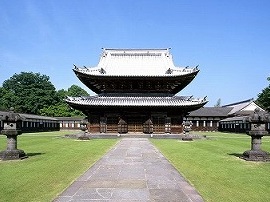
Head Priest, Doko Yotsuya
Zuiryuji was built by Maeda Toshitsune to mourn for his predecessor, Toshinaga. Toshitsune was very grateful to Toshinaga for passing the lordship on to him, as they were half-brothers with different mothers, and he enshrined a memorial tablet for Toshinaga in the temple’s hatto (Dharma hall), completing the magnificent temple in 1663 after 20 years. During construction, the exterior was surrounded by trenches, making it seem like a castle. In 1997, the sanmon (temple gate), hatto, and butsuden (main hall) were  designated as National Treasures, along with five of the buildings being designated as Important Cultural Properties, as it is highly regarded for being in the style of early Edo-period Zen temple construction. Mr. Doko Yotsuya, head priest of the temple, provides worshippers and tourists with humor-filled explanations of the history and unique features of Zuiryuji.
designated as National Treasures, along with five of the buildings being designated as Important Cultural Properties, as it is highly regarded for being in the style of early Edo-period Zen temple construction. Mr. Doko Yotsuya, head priest of the temple, provides worshippers and tourists with humor-filled explanations of the history and unique features of Zuiryuji.
7. Kanaya-machi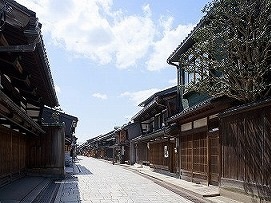
When starting to develop Takaoka, Toshinaga Maeda invited seven metal casters to Kanaya-machi to stimulate the economy of the new town, providing excellent support with privileges such as exemption from taxes or labor duties. With its old houses built using wooden lattices, known as samanoko, remaining along an approximately 500-meter street, in 2012 Kanaya-machi was designated as an Important Preservation District for Groups of Traditional Buildings. Even today there are still cast metal workshops and stores where you can make tin accessories.
8. Great Buddha of Takaoka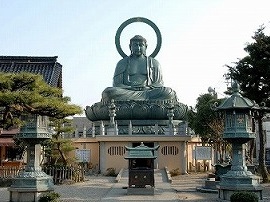
The Great Buddha of Takaoka is one of Japan’s Three Great Buddhas, along with those in Nara and Kamakura. This 16-meter-tall bronze Buddha was rebuilt in 1933 for the third time. The first and second Great Buddha of Takaoka were made of wood, and were lost to fires. The passion of Takaoka citizens towards rebuilding the Buddha statue, along with ensuring it wouldn’t burn again, led to building this statute using the techniques of Takaoka metal casters.
9. Fushiki Kitamaebune Museum
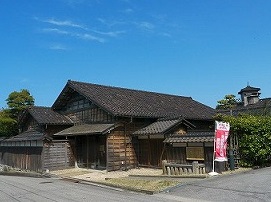 The Kitamaebune, considered at the time a major modern logistics lifeline, was a shipping route that went from Osaka through the Seto Inland Sea, to San’in, Hokuriku, Tohoku, and then Hokkaido. There were many ports along the route, and the port of Fushiki in Takaoka was in a particularly good location among the Toyama ports. Many people and goods moved through the port in the late Edo period and the Meiji period, with many families making their fortune from the shipping industry. Many large pots cast in Takaoka were sold in Hokkaido, bringing prosperity to the Takaoka casting industry and residents of the town. The Fushiki Kitamaebune Museum is the former residence of the Akimoto family, who ran a prosperous shipping agency in the Meiji period, open to the public for people to learn about the history of Fushiki and trade in the area, which prospered from shipping along the Kitamaebune. This building is one of only the townhouses in Takaoka city that still has a lookout tower, used to check for ships coming into the harbor, as well as retaining its mansion and earthen storehouse, and in 1998 it was designated as a cultural property by Takaoka City as a valuable historical building.
The Kitamaebune, considered at the time a major modern logistics lifeline, was a shipping route that went from Osaka through the Seto Inland Sea, to San’in, Hokuriku, Tohoku, and then Hokkaido. There were many ports along the route, and the port of Fushiki in Takaoka was in a particularly good location among the Toyama ports. Many people and goods moved through the port in the late Edo period and the Meiji period, with many families making their fortune from the shipping industry. Many large pots cast in Takaoka were sold in Hokkaido, bringing prosperity to the Takaoka casting industry and residents of the town. The Fushiki Kitamaebune Museum is the former residence of the Akimoto family, who ran a prosperous shipping agency in the Meiji period, open to the public for people to learn about the history of Fushiki and trade in the area, which prospered from shipping along the Kitamaebune. This building is one of only the townhouses in Takaoka city that still has a lookout tower, used to check for ships coming into the harbor, as well as retaining its mansion and earthen storehouse, and in 1998 it was designated as a cultural property by Takaoka City as a valuable historical building.
10. Takaoka Mikurumayama Museum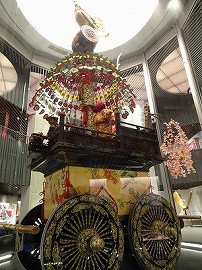
This museum was opened in the spring of 2015, to allow people to view Mikurumayama floats year-round, and see the history and traditional techniques of Mikurumayama floats. Mikurumayama floats are beautiful and extravagant, and are called “moving art galleries,” decorated by the wealth citizens made in Takaoka, using the skills of Takaoka artisans in metalwork, lacquer, and tapestry. In recent years, to pass on the traditional techniques that have been preserved so far to the next generation, a modern “Heisei Mikurumayama” is being built over the course of five years, and part of this process can be seen at the museum. The Takaoka Mikurumayama floats were designated as an Important Tangible Folk-Cultural Property in 1960, and in 1979 were designated as an Important Intangible Folk-Cultural Property. There are only five cases across Japan of properties designated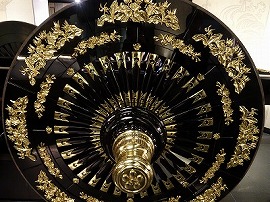 as both Important Tangible and Intangible Folk-Cultural Property, including Kyoto’s Gion Festival and Saitama’s Chichibu Festival. The Mikurumayama Festival is one of the 33 traditional festivals across Japan being considered for inclusion on the UNESCO List of Intangible Cultural Heritage as a group, likely to occur this year.
as both Important Tangible and Intangible Folk-Cultural Property, including Kyoto’s Gion Festival and Saitama’s Chichibu Festival. The Mikurumayama Festival is one of the 33 traditional festivals across Japan being considered for inclusion on the UNESCO List of Intangible Cultural Heritage as a group, likely to occur this year.
At each cultural property, an explanation will be provided, along with opportunities to film and photograph.
【Tour Itinerary】
1. Dates: Thursday, November 24 to Friday, November 25, 2016
<Day 1>
8:12-10:48 Tokyo to Shin-Takaoka Station (Kagayaki 521, Hakutaka 553)
11:15-12:45 Zuiryuji Temple
12:50-13:30 Lunch
13:45-14:30 Takaoka Mikurumayama Museum
14:45-15:45 Takaoka Castle Site/Takaoka Great Buddha
16:00-18:00 Momentum Factory Orii
18:35- Dinner party
<Day 2>
8:30 Leave hotel
9:00-9:45 Fushiki Kitamaebune Museum
10:15-11:45 Futagami
12:00-13:30 Kanaya-machi (lunch)
14:00-15:45 Nousaku
16:15-17:45 Shimatani Shouryu Kobo
18:00 Arrive at Shin-Takaoka Station
18:23-21:16 Shin-Takaoka to Tokyo Station (Hakutaka 574)
*The above itinerary is subject to change.
2. Qualification: Bearer of Gaimusho Press Registration Card
3. Cost: 13,000 yen per person including transportation accommodation meal and interpreter fee (FPCJ will later inform the participants of methods for payment, cancellation fee, etc.)
4. Participants: Limited to 10 applicants.
(Only one reporter and one photographer from each company, but two participants from each TV team will be acceptable.)
*If the number of applicants exceeds 10, an upper limit may be set on the number of participants from each country/region.
5. FPCJ Contact: Ms. Kiyomi Obo (Tel: 03-3501-3405)
6. Remarks:
(1) There may be some restrictions on photographing and filming at the tour sites. Please follow the instructions of the officials on duty.
(2) The Takako City Japan Heritage Promotion Council and FPCJ will not be liable for any inconvenience, trouble or accidents that might occur during the tour.



